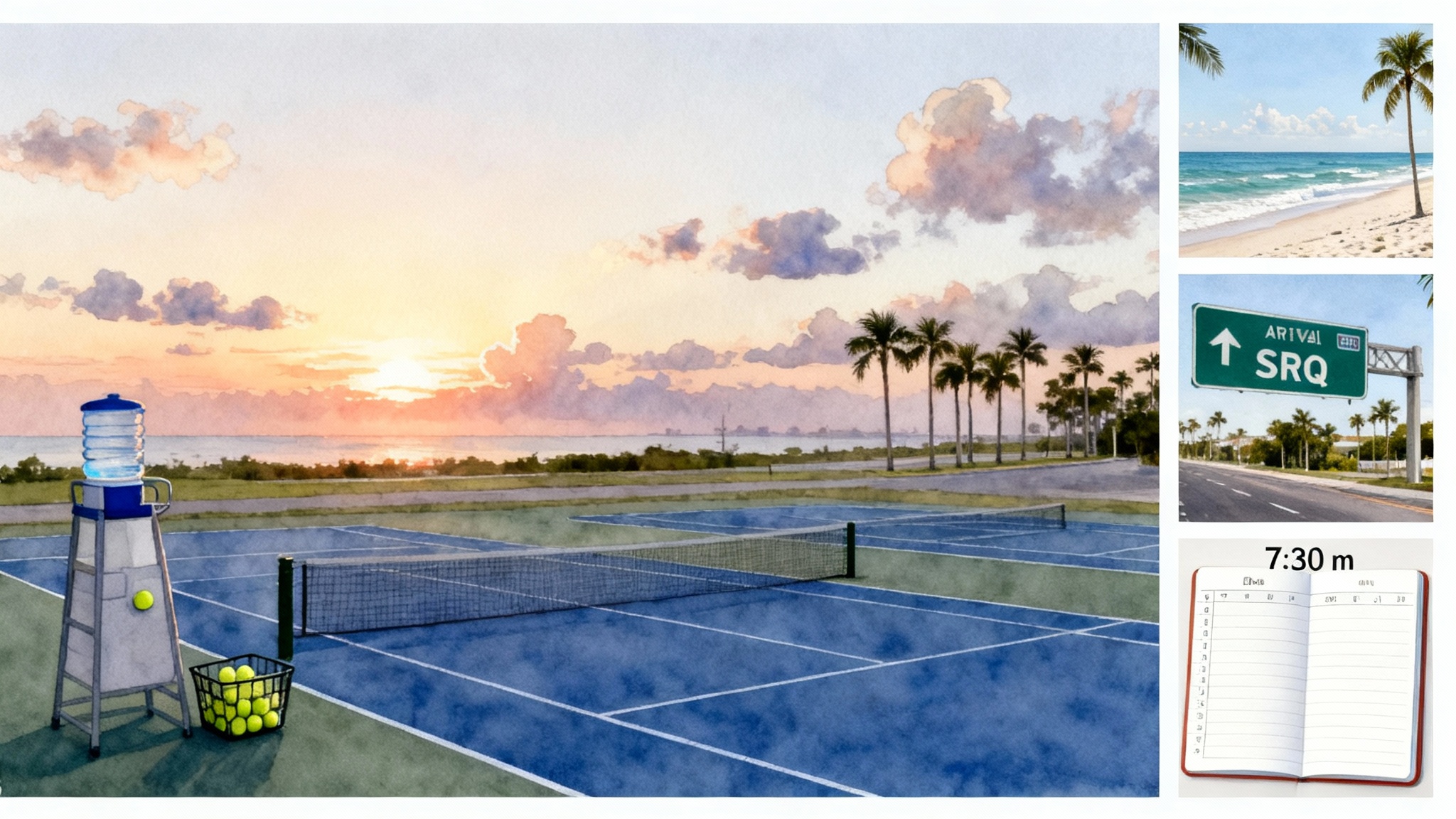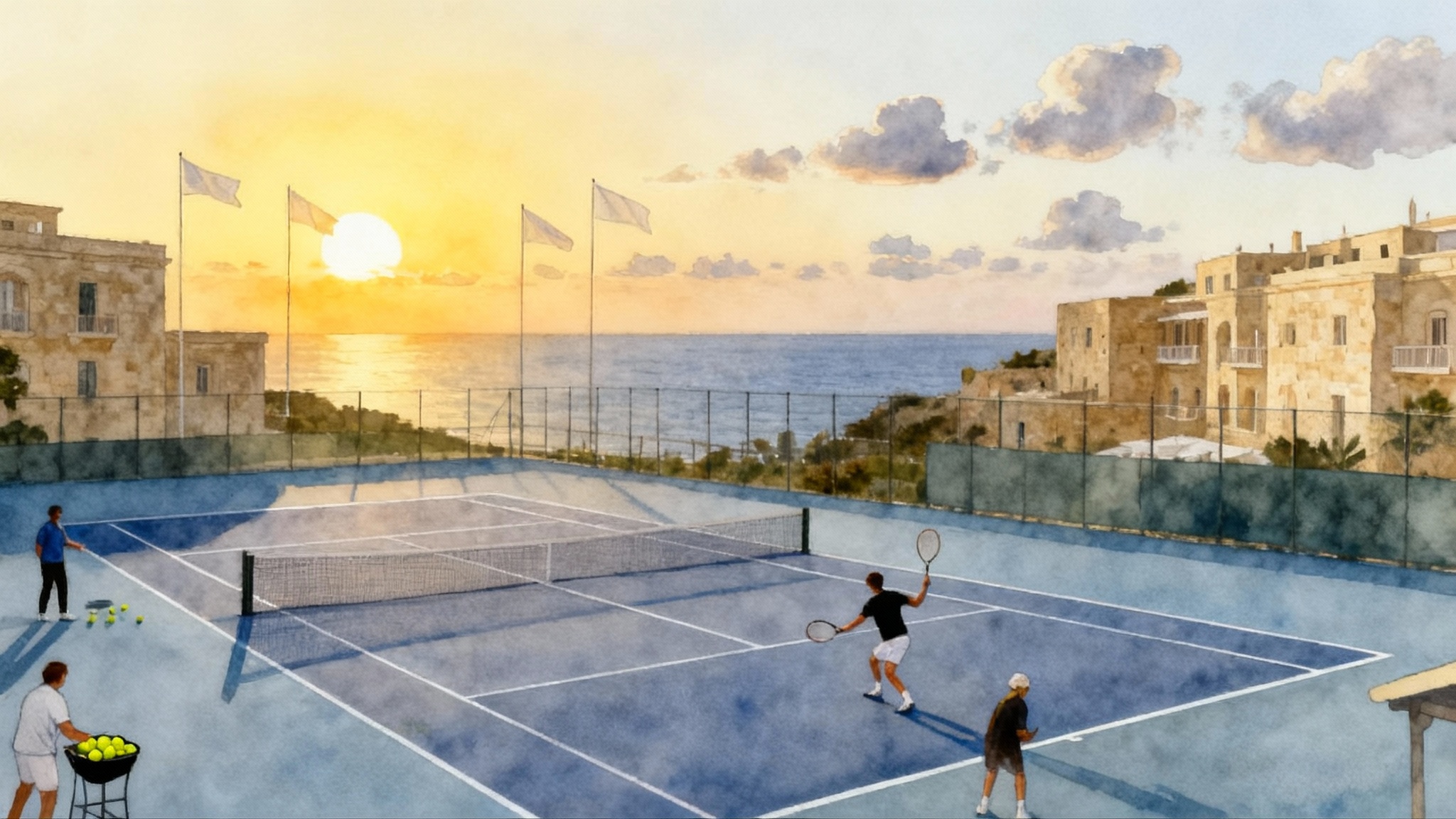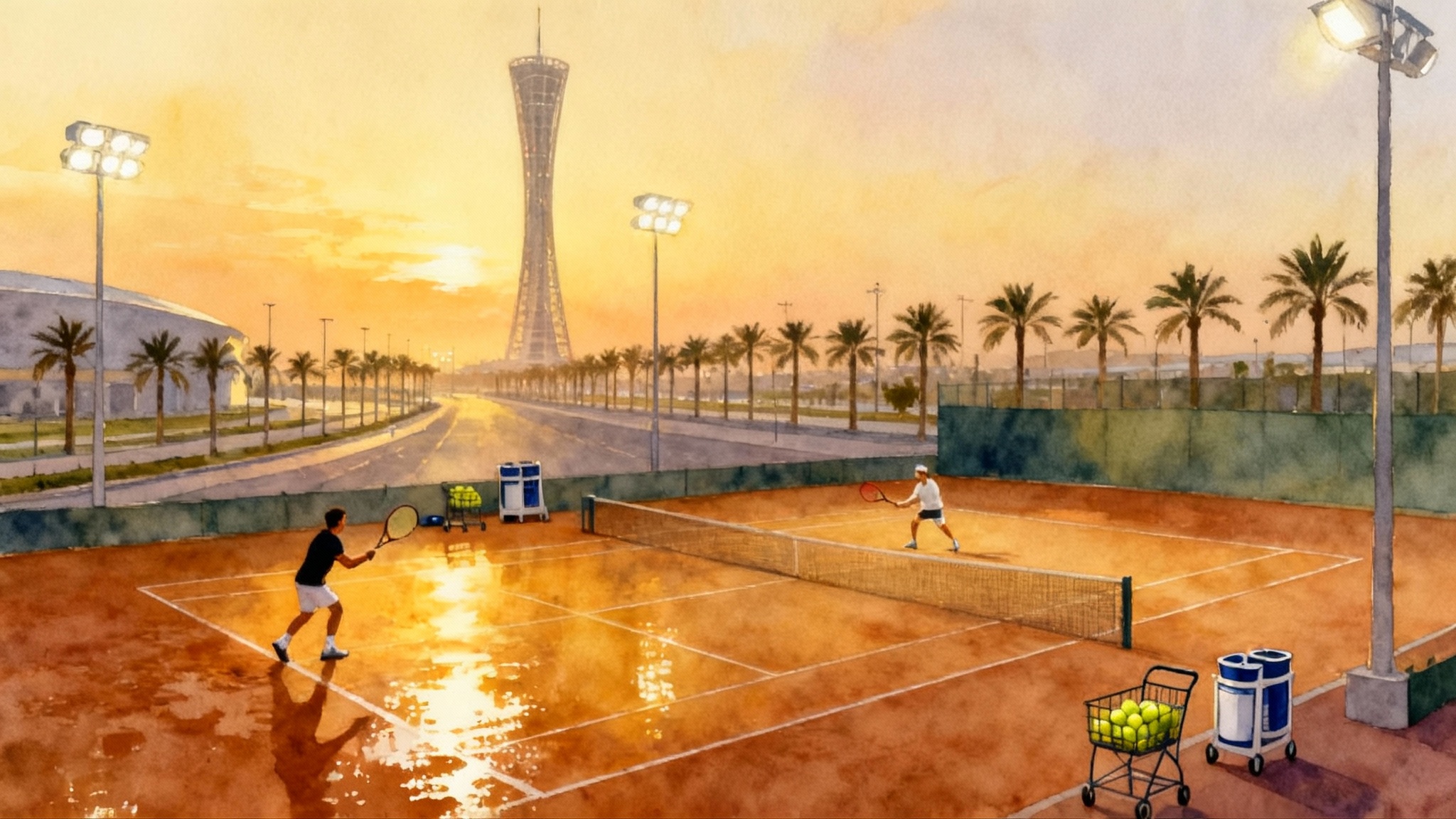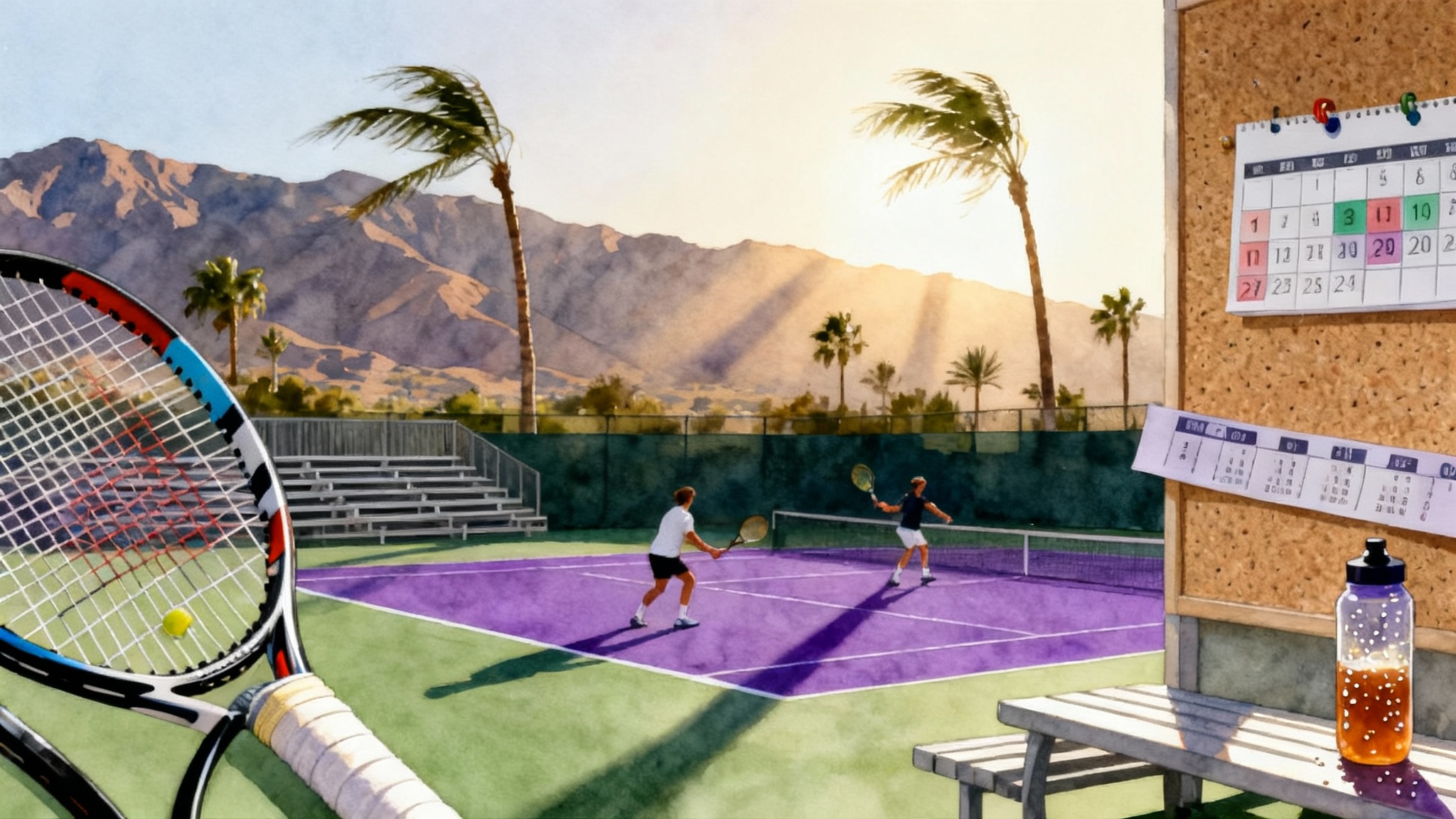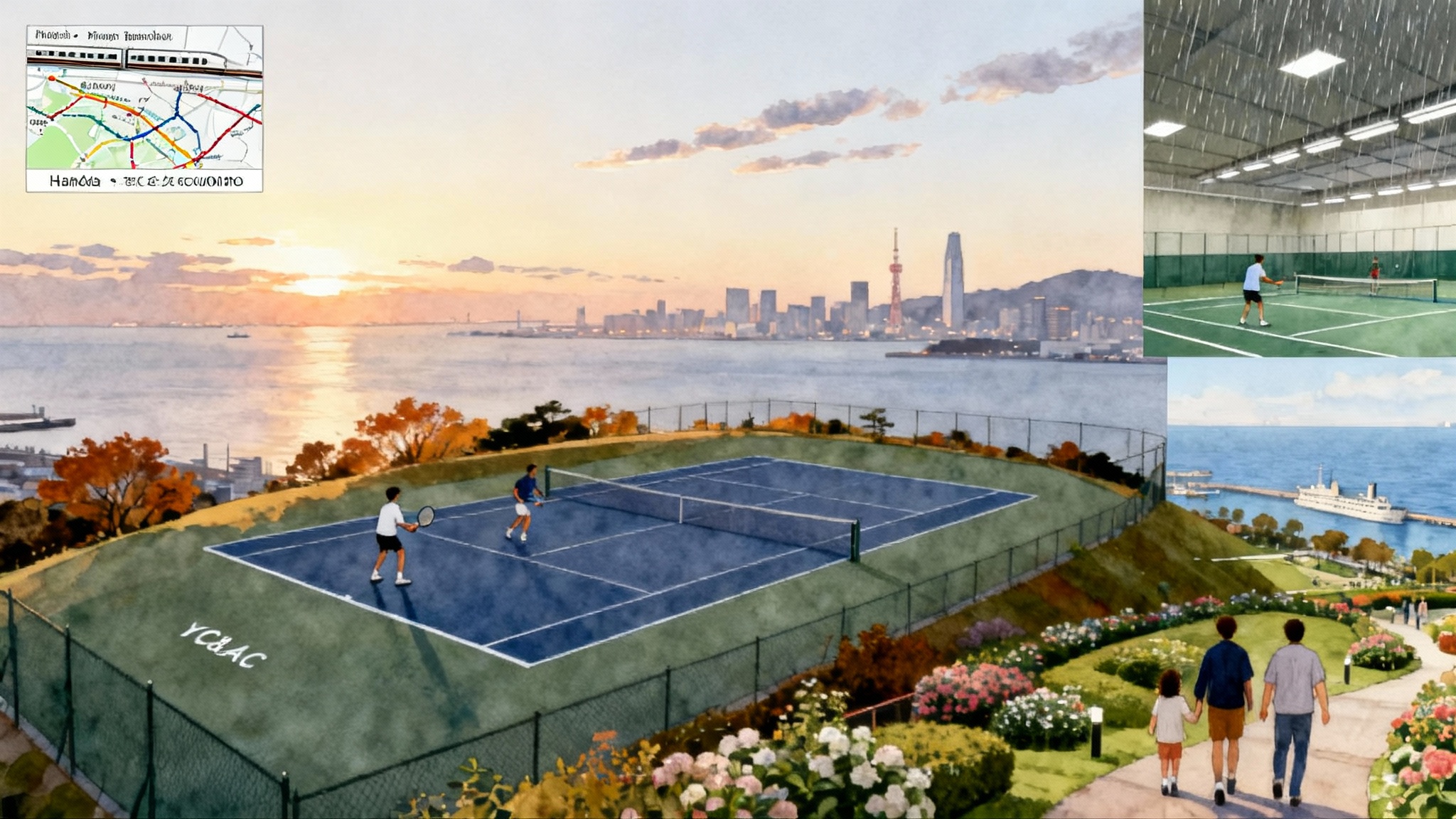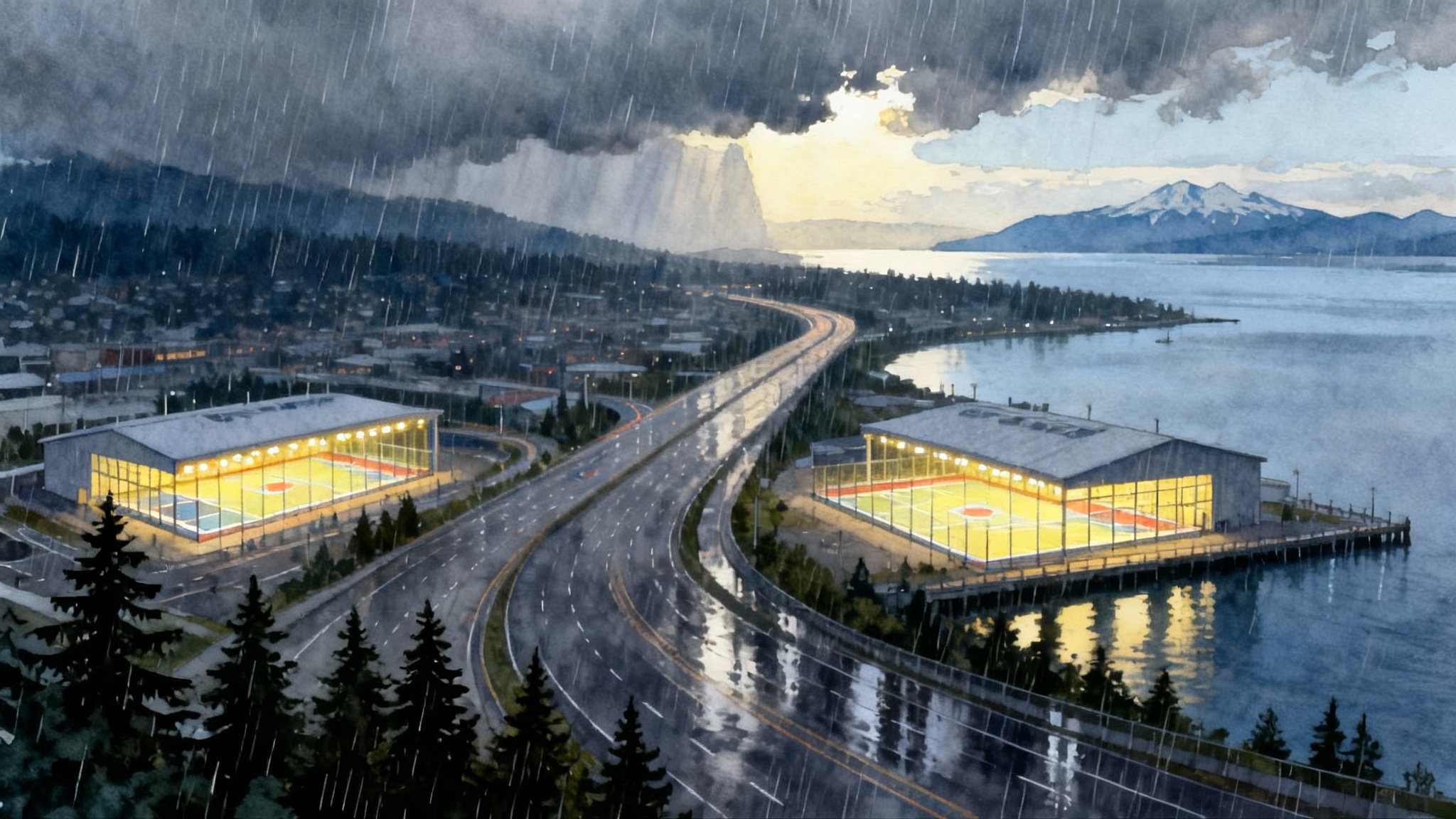Sintra–Cascais: Europe’s Best Mild-Climate Tennis Base 2025–26
Planning a 2025–26 tennis block in Europe? Sintra–Cascais sits on Lisbon’s Atlantic ridge with cooler summers and gentle winters that protect training quality. Here is when to go, how to schedule days, and where to play.
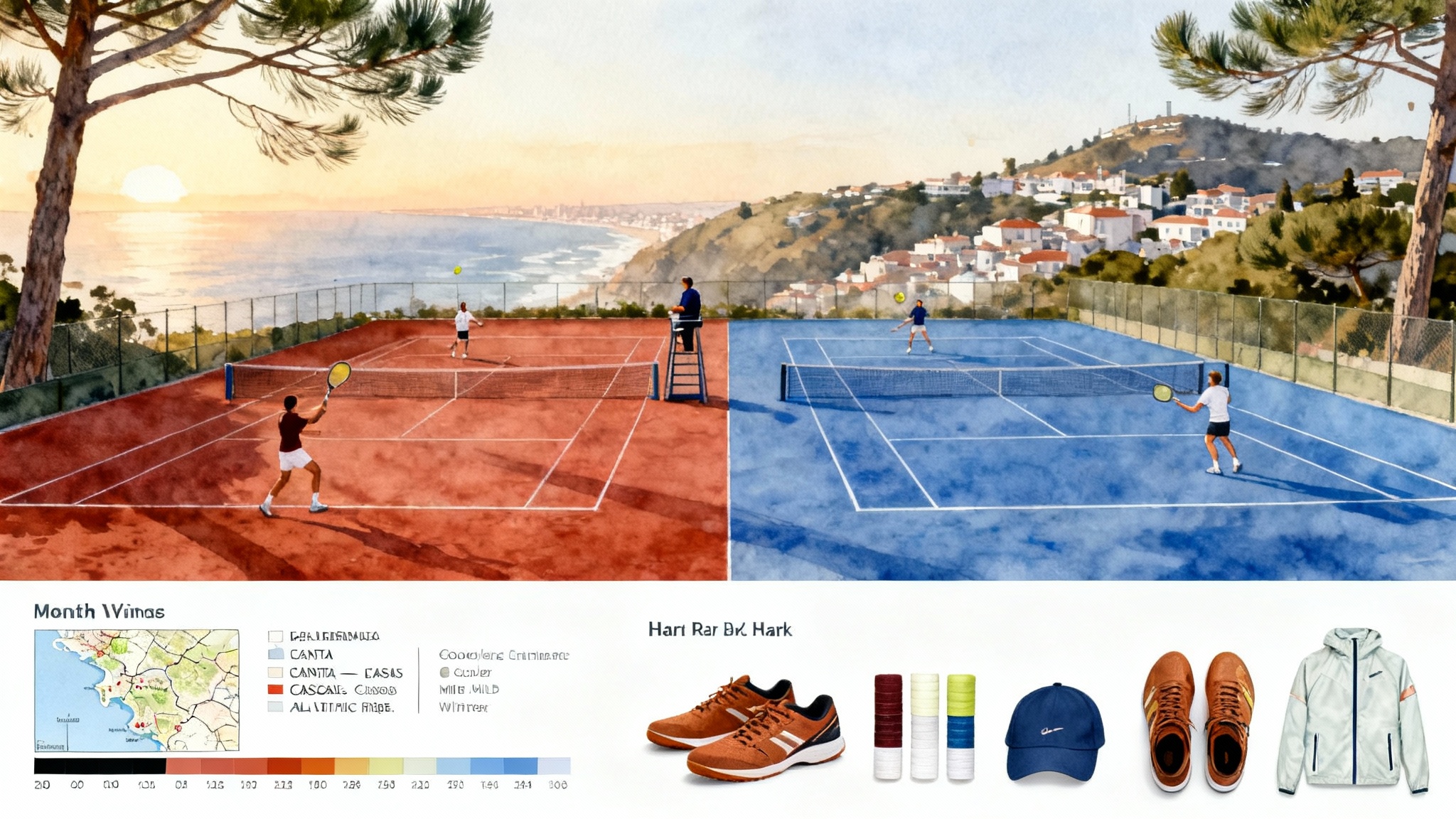
Why Sintra–Cascais works for year‑round tennis
Look at a map and you see Lisbon opening to the Atlantic, with the Sintra hills forming the western ridge of the metro area. Those hills are not just scenery. They bend wind, trap cool air, and pull marine layers inland. The result is a microclimate that softens summer peaks and smooths winter lows. Most European tennis hubs fight heat waves in July and August or weeks of frost in January. Sintra–Cascais usually avoids both. When you are planning a season of training, that stability matters more than any single feature. Coaches can keep a consistent tempo, players can protect their workload, and match play actually reflects skill rather than survival.
Think of the region as a gently air‑conditioned balcony over the ocean. Even when Lisbon bakes, a short drive toward Sintra brings shade, altitude, and a breeze that keeps afternoon sessions playable. Winter is different. Moisture from the Atlantic does bring showers, yet cold snaps are short and mornings are often bright. If your goal for 2025–26 is dependable court time without heat stress, Sintra–Cascais is hard to beat. For a big‑city alternative in Europe, compare the Barcelona tennis hub for 2025–26. If you like marine‑layer setups, see our guide to marine‑layer tennis in Santa Cruz.
The 2025–26 calendar: best months and what to expect
Below is a practical, training‑first view of the year. Temperatures are typical ranges rather than single averages. Wind varies by neighborhood, but the pattern is stable enough to plan around.
-
September to early November: The sweet spot for adults and juniors who want competitive tempo without heat fatigue. Daytime highs often sit in the low to mid 20s Celsius, which is upper 60s to mid 70s Fahrenheit. Courts are dry, balls stay lively, and evenings are calm. School‑year families can target late October for lighter crowds.
-
Late November to February: Gentle winter. Expect many playable mornings and early afternoons with highs around the mid teens Celsius, which is mid 50s to low 60s Fahrenheit. Rain arrives in pulses. Build in one recovery or video session per week to absorb wet days. Windy spells are more common on the open shore near Guincho. If you want maximum reliability during this window, set your base slightly inland near Sintra or Beloura.
-
March to June: The spring engine. Temperatures climb to the high teens and low 20s Celsius, which is low to mid 70s Fahrenheit by late spring. Mild mornings, brighter late afternoons, and fast adaptation for players coming from colder climates. This is ideal for pre‑season blocks and adult teams prepping for spring leagues.
-
July to August: Cooler than most of Mediterranean Europe, yet still the warmest period. Afternoon sessions are best scheduled for late day. If you need summer dates, move sessions inland in the morning, then use coastal courts after 16:30 when the breeze turns friendly.
Key takeaway for 2025–26: if you can choose only one month, pick October or May. If you want two blocks, go mid March and mid October, which bookend the hottest weeks and give you symmetry across the year.
Daily weather windows and training rhythm
Daily rhythm in Sintra–Cascais is predictable enough to set standard windows:
-
Morning window: 08:00 to 11:00. Air is cool, wind is light, and courts are quiet. Use this for technical work, basket drills, and movement patterns. Clay plays truer, hard courts are comfortable, and hydration needs are moderate.
-
Midday window: 12:00 to 15:30. Brightest sun and, on some days, a cross‑breeze. Convert this to lower‑impact work. Do serve buckets, return reps, situational points to 7, or a gym and video block if the breeze becomes gusty. On winter rainy pulses, switch this window to indoor strength, mobility, and analysis.
-
Late‑day window: 16:30 to sunset. The training sweet spot. Temperatures ease, the breeze relaxes or aligns, and players can push intensity. Schedule match play, live ball drills, or fitness finishers.
Scheduling tip: build a two‑a‑day pattern with the heavy technical load in the morning and competitive work late day. Keep the middle for food, nap, film, and prehab. On windy days, orient cross‑court drills with the wind and set targets that teach depth control rather than fight the elements.
Clay or hard court, and how to decide
The region gives you both surfaces, often in the same complex. The choice should follow your goals, recent load, and weather on the day.
-
Clay for movement and volume: Clay is kinder to joints and rewards footwork improvement. In spring and fall it plays medium pace, so you can cover more balls without overcooking heart rates. For juniors building patterns, clay lets coaches stretch points and teach shape and height. For adults returning from time off, clay helps rebuild volume without pounding.
-
Hard court for pace and first‑strike patterns: Use hard courts when you want to sharpen serve plus first ball, return depth, and transition plays. On cool mornings, the bounce is true and footwork cues are crisp. Late‑day hard‑court sessions in summer feel fast without the oven effect you get in continental cities.
-
Mixed blocks: If you have six days, try three on clay for volume and three on hard for decision speed. If you have two weeks, use a 60–40 split that fits your match calendar. Clay builds the engine. Hard tunes the race strategy.
Equipment note: bring clay‑specific shoes if you plan more than two clay sessions per week. Pack overgrips for humid mornings and an extra dampener, since strings can buzz in breezy conditions.
A one‑week camp that actually fits the weather
This 7‑day plan assumes September to early November or March to June. Shift the midday items indoors during winter pulses.
Day 1, arrival and reset
- Easy 60‑minute hit, mainly rhythm and feel on clay
- Mobility, breathwork, and a 20‑minute neighborhood walk to sync your body clock
Day 2, technique plus placement
- Morning, 120 minutes: forehand and backhand shape, contact height ladders, cross‑court windows with cones
- Midday, 45 minutes: shoulder care, trunk rotation, and 10 minutes of serves to targets
- Late day, 90 minutes: points to 11 with pattern restraints, such as cross‑court plus line change only on neutral balls
Day 3, serve, return, and first four shots
- Morning, 90 minutes: serve routine, second serve lift, and return depth
- Midday, 45 minutes: video review on phone or tablet and note one cue per stroke
- Late day, 90 minutes: king of the court, two up two back, and approach plus volley finishers
Day 4, volume on clay
- Morning, 120 minutes: live ball cross‑court, inside‑out patterns, and high heavy to backhand
- Midday, recovery swim or beach walk
- Late day, 60 minutes: match play set, coach tracks depth over the service line rather than winners
Day 5, hard‑court speed
- Morning, 90 minutes: serve plus first ball, return plus plus‑one, direction change footwork
- Midday, 30 minutes: contrast mobility and light band work
- Late day, 90 minutes: tie‑break ladder with pressure drills
Day 6, test day
- Morning, 60 minutes: Top‑10 drills you trust, short and sharp
- Late day, 2 hours: full match play, record on a tripod, keep between point routines tight
Day 7, de‑load and depart
- Morning, 60 minutes: cooperative rally to 50 each side, volleys, overheads
- Brunch, review video and pick three habits to take home
A two‑week progression for 2025–26
Week 1 builds volume and mechanics. Week 2 adds intensity and decision speed. Use one rest half‑day each week.
-
Week 1: four clay sessions, two hard sessions, two gym sessions, and one mobility circuit. Technical goals include contact distance, recovery step on wide balls, and serve toss consistency.
-
Week 2: three clay sessions and three hard sessions, more live ball and match play, and one strength session with power emphasis. Tactical goals include serve plus first ball accuracy maps, backhand line change under pressure, and transition patterns.
Weekend idea: add a local match afternoon with players at your level. Many clubs in Cascais, Estoril, and Sintra have active ladders. Ask the academy desk to pair you correctly and to film a set on the back fence so you leave with game tape.
Spotlight: Beloura Tennis Academy
Beloura Tennis Academy sits just east of Sintra, a short drive inland from Cascais, with a setting that benefits from the ridge effect without the heavier coastal wind. The appeal is simple. You can switch surfaces, you get structured junior and adult sessions, and you can bolt on fitness or video review without leaving the site.
-
Mixed surfaces: Plan blocks that start on red clay for volume, then step to acrylic hard courts for pace. Coaches there know how to thread the daily weather window, scheduling technical work early and live ball later, which suits the local pattern.
-
Juniors: The academy runs groups by level instead of only by age, which keeps rallies long enough to learn. Ask for pattern constraints that match your athlete’s tournament calendar, such as second serve plus high forehand patterns for clay events.
-
Adults: Book a technique tune‑up in the morning and a live‑ball or match‑play slot late day. Request a single primary cue per session that you can measure, such as 60 percent of forehands landing deeper than the service line or 8 of 10 returns clearing the middle tape by half a racket.
-
Add‑ons: On wet mornings, shift to movement screens, prehab, and video notes. The academy can arrange sparring or short‑set ladders that fit work trips and family schedules.
If your 2025–26 goal is a mixed‑surface reset, Beloura is a straightforward base. It pairs well with a rental car and a hotel or apartment in Sintra, Cascais, or Estoril.
How to get there and move around
-
Flights: Book into Lisbon Humberto Delgado Airport. If you land before noon, you can hit that afternoon. From the airport, Beloura and greater Sintra are usually a 35 to 45 minute drive, depending on traffic. Evening arrivals still allow a short mobility session and a light dinner before bed.
-
Trains and local lines: From central Lisbon, the Sintra line from Rossio Station reaches the town center, and the Cascais line from Cais do Sodré reaches Cascais and Estoril. Check Sintra and Cascais rail lines for schedules. For academy sessions, a ride share or car from the station is simplest.
-
Car rental vs ride share: A compact car is the most flexible option if you plan beach recovery, grocery runs, and side trips. Ride share works well if you anchor near Sintra or Cascais and keep sessions in one zone. Parking near inland clubs is straightforward compared with the historic center of Sintra, which has tight streets and tourist traffic.
-
Within‑day transfers: Build 20 minutes of float between sessions for traffic variance. If wind spikes on the coast, be ready to shift inland on short notice.
Where to stay, by training goal
-
Sintra hillside guesthouses: Cooler evenings, quiet mornings, and quick access to inland courts. Best for focus blocks and junior teams. Expect older buildings with charm and thicker walls that help sleep.
-
Cascais and Estoril beach hotels: Great for families and adult camps that want walks, restaurants, and easy recovery swims. Afternoons are breezier, but late‑day sessions are five to fifteen minutes by car inland.
-
Resort zones near the fairways: The belts around Quinta da Marinha and Quinta da Beloura offer apartment‑style stays, easy parking, and breakfast buffets that suit two‑a‑day training.
Kitchen tip: many apartments have small but functional kitchens. Stock yogurt, fruit, olive oil, eggs, and rice cakes. Your late training block will thank you.
Cross‑training and recovery in the landscape
-
Trails: The Sintra hills have shaded paths where you can run easy thirty minute loops or do a brisk hike after morning drills. The trees block wind and keep heart rates in the aerobic zone without overuse.
-
Water work: Cascais beaches make perfect contrast recovery. Ten minutes of cold immersion to mid‑shin after match play helps freshness without overthinking protocols.
-
Mobility and breath: Coastal boardwalks near Estoril and Cascais are ideal for evening walks. Combine nose‑only breathing and a ten minute mobility sequence to downshift before dinner.
Cost control without false economies
-
Group size: Two to four players per court keeps coaching eyes high quality and splits costs smartly. Solo lessons are useful for day one and day four, then return to shared sessions for volume.
-
Surfaces: If budget is tight, book most sessions on clay for lower shoe and joint costs, then sprinkle hard‑court blocks where they add the most value.
-
Transport: A single rental car per court group is usually cheaper than four daily ride shares and unlocks better food and recovery options.
Risks and how to adapt
-
Wind: It teaches. Use it. Rally cross‑court with the wind, then play line changes only when the ball is against the wind. Set serve targets that respect a cross breeze. Aim bigger and accept fewer aces in exchange for more first serves in.
-
Rain pulses in winter: Build one indoor day per week for film and gym. Use towels, dry grips, and a backup pair of shoes. Courts drain quickly inland, so late‑day play often survives a morning shower.
-
Heat pockets in midsummer: Flip the day. Hit 08:00 to 10:00 and again 18:00 to 20:00. Spend the middle on shade, food, and nap.
Packing list that matches this microclimate
- Two pairs of shoes, one clay, one hard
- Six to eight overgrips per week, two dampeners, and a small towel for the handle
- Light windbreaker, cap, and two pairs of sunglasses if you are prone to losing one
- Sunscreen for morning and late day, even in winter, plus lip balm
- A compact tripod and your phone for video
- Reusable water bottle and a small roll of athletic tape
How to turn a block into lasting improvement
Training in a mild climate is not about comfort. It is about repetition without the bad stress. Pick three measurable habits for the whole block. For example, first serve percentage above 60, rally ball depth beyond the service line on six of ten balls, and a clean recovery step on wide forehands. Put those on your phone lock screen. At the end of each day, note wins and one adjustment. Beloura and the surrounding clubs will supply the rest: courts that feel playable, coaches who can sequence your work, and a daily rhythm that is easy on the body.
The bottom line
Sintra–Cascais gives you what most European tennis destinations do not in 2025–26. Cool mornings for technique. Gentle afternoons for match play. Clay and hard courts in the same zone. Simple logistics. That mix makes your training bankable. Choose the right month, run two‑a‑day sessions around the weather windows, and anchor at a reliable base like Beloura for mixed‑surface work. The region does not shout for attention. It simply gives you the conditions to do the work that moves your tennis forward.
